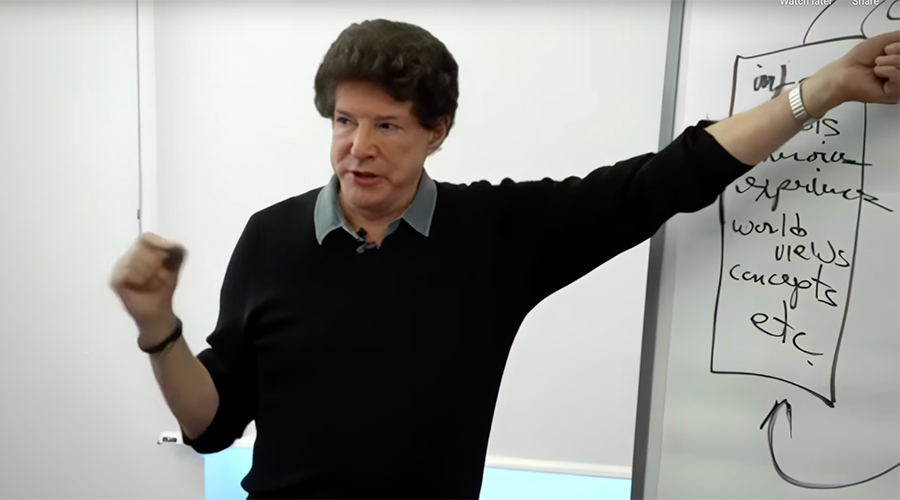The Structural Dynamics of Orientation
In my book, The Path of Least Resistance, I describe two vastly different types of orientations: reactive-responsive; and creative-generative. In one orientation you either react or respond to the prevailing circumstances. In the other, you organize your life around your choices, often about your highest aspirations and deepest values. These orientations are not simply a matter of adopting a new attitude or trying on different beliefs. It is a matter of structure. In fact, people often want to make positive changes in their lives, but if the underlying structure is unchanged, all that will happen is an oscillating pattern in which for there is change, but then there is a reversal that brings the person back to the original condition. This is a structural dynamic, and, like the rest of physics, is nothing personal.
But it can feel awfully personal when it’s your life. One step forward followed by one step back can give the impression that you are powerless to change anything of significance.
Structural Patterns in Organizations
This very same principle is true for organizations. There are two patterns. One is oscillation and the other, advancement. We have seen organizations build up capacity and then downsize, and then build up capacity again, and then downsize again. They have centralized decision-making, and then decentralized decision-making, and then centralized again. They have oscillated from the focus being on shareholder return of investment to customer satisfaction, back to shareholder return of investment. These types of patterns are more common than not. And with all the change efforts that have hit the corporate scene over the years, most processes have first had their day, only to be rejected later and replaced by the next flavor of the month.
A change of underlying structure will lead to a change of behavior. Not your good intentions, your sincerity, your hopes, your goodness, or how much you care. When you are in a rocking chair, you will go back and forth. That is the nature of the structure.
Understanding the Structures in Play
This is not a problem to solve, but a matter to understand. How can we understand the structures we are in? For the most part, they are invisible at first. It takes training and practice. It is unlikely that knowing that there might be some structure in place that is causing an oscillating pattern will change the pattern or the structure. Structure is made of a network of relationships among various elements. Often desires are tied to concepts and reality and other forces in place. It takes a type of deep level of observation to come to understand the exact forces in play in any structure. This is not something that can be done by formula or matrix. It can only be done by clarity and knowing what you are seeing. How the elements of any structure impact each other and the whole. How the structural dynamics have tendencies for behavior and how to change the underlying structures so that the patterns of behavior can move from those that oscillate, in which success will eventually be reversed, to those that advance, in which success becomes the building block for further success.
The Fundamentals of Structural Thinking
The best training for this on the entry level is our Fundamentals of Structural Thinking, a four-day course which trains participants how to see structures in play, and how to change them in ways that lead to real and lasting change. Most of those who attend are consultants, coaches, managers, and others in the helping professions. Some come focused on professional and business uses of structural dynamics, other for personal and family uses. These people learn how the underlying structures are THE causal factors in people’s lives, and therefore, they are not fooled by the situations they find themselves in. Rather, they are able to see the deeper level of causality: that the underlying structure of anything will determine its behavior.
Additionally, one of the best ways to learn how to live in the creative/generative orientation is by taking the three-month Creating Your Life course, which can give you the hands-on skills and experience to build the most positive underlying structures in your life-building process.
Robert Fritz will lead an in-person FST this coming March, 2026 in Australia. Contact seminars@robertfritz.com for more information.
© 2015 Robert Fritz. Updated in 2025. Used with permission
About the Author:
Robert Fritz is a composer, filmmaker, organizational consultant, and author of numerous books including the international bestseller The Path of Least Resistance, Creating, Your Life as Art, The Managerial Moment of Truth, Identity, and The Path of Least Resistance for Artists .
